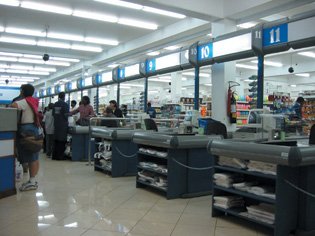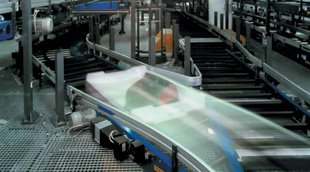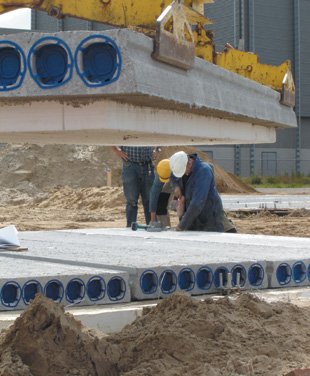What Is a Service?
| A service is a chain of activities that form a process and have value for the end user. You engage in a service when you get your shoes shined or your nails manicured or when you visit a fast-food restaurant. Your mobile phone's usage plan is a service, and you participate in a service every time you travel on a plane, train, or taxi. Services can be small and discrete, such as the sale of postage stamps by some ATM machines, or they can be huge, such as the sorting and delivery of physical mail. Service providers are all around us and account for an enormous portion of the world economy: from restaurants and bars to dry cleaners, hospitals, construction companies, street cleaners, and even complete governments. Services are everywhere. Services greatly affect our quality of life because we are touched by so many of them every day. A poor service can make your subway ride to work uncomfortable, your packages late or undelivered, your lunch distasteful, your mobile phone coverage poor, and your ability to find evening TV shows problematic. Service design, like systems design (see Chapter 2), focuses on contexton the entire system of use. People use products (often with others) in environments in structured processes. Service design, really, is designing this whole system of use. The system is the service. The Characteristics of a ServiceMost services have many of the following characteristics:
The Elements of Service DesignTraditional design focuses on the relationship between a user and a product. Service design, in contrast, works with multiple touchpointsthe store itself, the sign that drew you to the store, the salesperson in the store, what the salesperson says, the packaging the purchased product arrives inand focuses on users' interaction with these touchpoints over time. These touch-points typically are environments, objects, processes, and people. EnvironmentsThe environment (Figure 8.2) is the place where the service takes place. This can be a physical location such as a store or a kiosk, or a digital or intangible location such as a telephone or a Web site. The environment needs to provide the space necessary to perform the actions of the service, as well as cues for those actions, such as signs, posted menus, and displays. The environment tells users what is possible. It creates affordances (see Chapter 3). Figure 8.2. Supermarkets, like this one in Kenya, have areas designed for the payment of products. One wonders, however, in the age of radio-frequency identification (RFID) tags, which can be embedded in product packaging and possibly allow automatic checkout when the product leaves the store, how much longer this part of the environment will be necessary.
iStockphoto Unlike products, services are often purchased, delivered, and used or consumed in the same place. Thus, the setting for any service needs to contain the resources for purchasing, creating, and consuming the service. ObjectsThese resources are often the objects that populate the environment. Objects in service design are meant to be interacted withthe menu at a restaurant, the check-in kiosk in an airport, or the cash register used to ring up a sale. These resources provide the potential for interaction and participation. Some objects are complex machines, like the baggage sorters at airports (only a portion of which are visible to passengers; see Figure 8.3). Others are as simple as a cloth to clean up spills. Figure 8.3. Objects in services can be huge, complex machines, such as the CrisBag baggage handling system from FKI Logistex, which uses RFID-tagged baggage totes to sort, track, and trace baggage.
ProcessesThe process is how the service is acted out: how it is ordered, created, and delivered (Figure 8.4). Everything down to the words used can be designed ("Do you want fries with that?" or "For 25 cents more, you can supersize it"). Processes can be very simple and shortthe customer puts money on the newsstand counter and takes a newspaperor they can be very complicatedthe vendor orders newspapers, the vendor pays for newspapers, the newspapers are bundled and shipped daily from printing presses and delivered to individual vendors. Figure 8.4. Workers installing a concrete floor follow a set process.
iStockPhoto Processes aren't fixed. Customers can be exposed to multiple, varied experiences via repeated exposure to the service. The process can subtly or radically change from place to place or over time. Moreover, there are often multiple pathways through a service; there isn't usually one way to do anythingpeople are simply too messy for that. Designers have to give up control (or, really, the myth of control) when designing a service process. Designers can't control the entire experience. However, interaction designers do have to define and design at least some of the pathways through the service. These pathways contain service momentssmall parts of the experiencewhich, when hung together, constitute the service and its experience. PeoplePeople are an essential part of most services because only through people do most services come alive, usually through complex choreography. In service design, there are two sets of users to design for: the customers and the employees. Customers and employees often perform different part of the service for the purpose of achieving a particular result. For example, in a Starbucks, customers order their drinks, employees then make the drinks, and then customers customize the drinks, adding milk, sugar, and so on. The two user groups co-create the service in real time. This real-time collaboration to create services means that services are tricky to design and the stakes are high. Failure happens face to face and can cause anger and embarrassment from both customers and employees. Designers, being divine beings only in their own minds, cannot create people; they can only, like a playwright, create roles for people within services, such as waiter, chef, or greeter (Figure 8.5), and give them parts to play. As Marshall McLuhan told us 40 years ago, people are focused on roles, not goals. Roles have a cluster of tasks surrounding them ("I take the product specifications to the engineers") that are easy to specify and that have traits and skills associated with them, so they are easy to "cast" ("must be a people person"). Figure 8.5. Chefs have clearly defined roles to play in restaurants and catering services and often have uniforms such as this one. Their skills and tasksprepare and cook foodare also well defined.
iStockphoto |
EAN: 2147483647
Pages: 110



